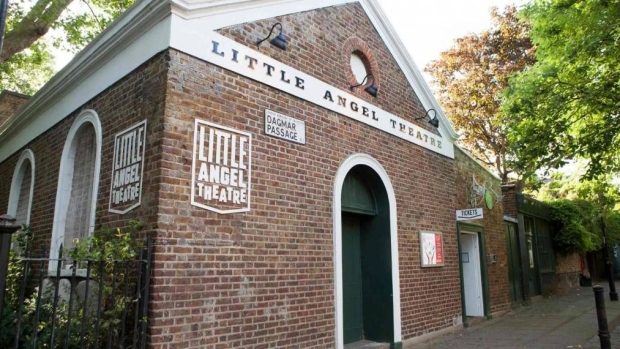Little Angel Theatre unveils 60th anniversary season
The season will feature both live and digital events

© Little Angel Theatre
The Little Angel Theatre will mark its 60th birthday with a variety of productions.
The venue will feature a smorgasbord of virtual and hopefully live performances, depending on government guidance.
The season will feature a "choose your own adventure"-style live digital production of Sean Taylor's Where the Bugaboo Lives. Directed by artistic director Samantha Lane and designed by Ellie Mills, the piece runs from 14 March to 2 May and is based on Sean Taylor and Neal Layton's book. It follows two children who discover a spooky valley beneath their house.
The Islington venue will reopen its doors in May with a socially distanced production of The Smartest Giant in Town. Based on the book by Julia Donaldson and Axel Scheffler, the piece is adapted by Lane and Barb Jungr, in a co-production with Fierylight. The piece has music by Jungr, set and costume by Kate Bunce, puppet design by Judith Hope and lighting by Sherry Coenen.
A digital production of If Not Here… Where? will run across UK hospices and hospitals from June 2021. The piece is directed by Laura Hunt and
designed by Ellie Mills with music composed by Dominic Sales. It is performed by Joni-Rae Carrack and Aaron Spendelowm with creative technologists Clarice Hilton and Michael Golembewski also involved.
A weekly digital series from 1 April will delve behind the scenes to look at the intricacies of puppetry design, while a new community project in June 2021 will see magical trees pop-up in community locations across north London.
Lane also spoke to WhatsOnStage about the new season:
WOS: Why did you choose to have the adaptation of The Smartest Giant as your first live show back?
Lane: It's a show that I have wanted to adapt for a while. It was a firm family favourite with my children when they were younger and I just think it's perfect for the stage. It also has a wonderful underlying message: don't judge a book by it's cover. George is scruffy – but he is kind and it's not what you have that is important, but rather who you are and what you do that counts. George can't stand to see the animals suffering and therefore generously gives away his smart clothes to help them, and that is what makes him a good person – it doesn't matter what he looks like!
George sets out to be the smartest giant, because that's what society expects of him, but ends up being the kindest AND smartest, but in terms of brains rather than beauty. Coming out of a pandemic it is a story full of hope and joy and about being kind – and I think we all need a little bit of joy and kindness given the challenges of the past year – and the challenges that still lie ahead – so it seemed like the perfect first live show after such a long period of closure.
WOS: What, as a venue, has this year taught you about the relationship between stage work and the digital format?
Lane: That the two things do not need to be mutually exclusive. Both are valid – and digital work has been a very successful way of us reaching many, many people at a time when we couldn't easily produce live work. We had actually started to think digitally pre-pandemic. We'd experimented with a number of shows that combined digital technology and live performance – Out of This World was a site specific show that used micro-cinema technology and If Not Here… Where? (a collaboration with GOSH that toured to hospitals/hospices across the UK) is a show that integrates live performance with an App and AR technology – and we had also created a made-for-screen digital short in partnership with Adastra/Bogglesox called Let's Fly with Aziza – and so moving into the digital realm was already part of our strategic ambition.
COVID just sped this up a little. And all of the work that we have created to date has been specifically made for screen. We were not interested in sharing our live shows as we cannot replicate their live quality – they were made to be performed in front of an audience. Instead, we focussed on what could be achieved at home (often using things we can find in our homes or source easily) and making work specifically for the screen. We wanted to reach children and their families who were now spending much more time in their homes. The reach of the digital work far exceeds the live work – both in terms of numbers and geographically. Our live work is UK based and reached circa 90,000 people annually, whereas, since March 2020, our digital work has been viewed over 750,000 times in 90 countries.
WOS: What does the medium of screen allow you to do with puppetry that might not be possible on stage?
The medium of film allows you to make choices in a puppet show that you are unable to make in a live context – you can cut between scenes, use a range of camera angles and shots and hide the puppeteer if you want to. Puppetry is a fantastic medium for screen and obviously has a long history on screen – right back to early TV children's shows like Bill and Ben and Muffin the Mule – and puppets continue to be a popular form on TV today. Who doesn't remember their favourite TV puppet as child?












